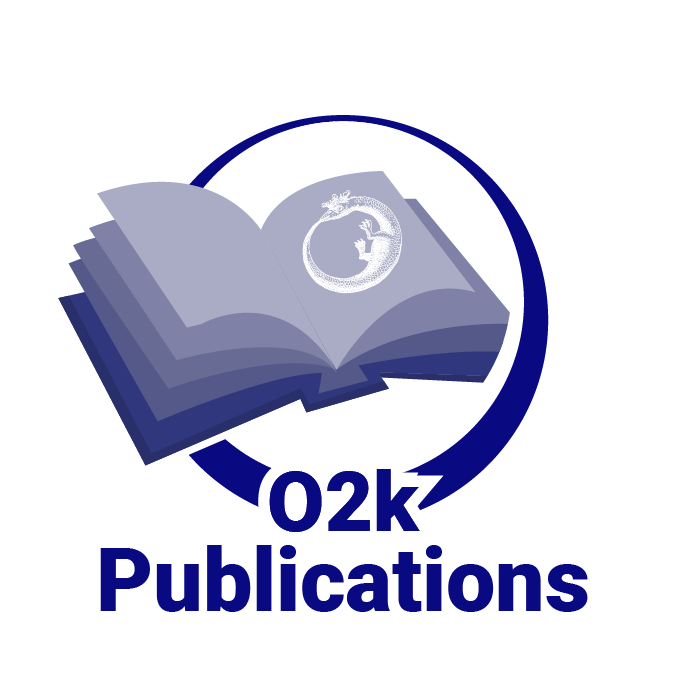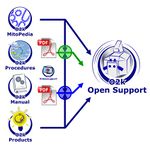|
|
| Line 1: |
Line 1: |
| | {{OROBOROS header page name}} |
| | |
| {{Publication | | {{Publication |
| |title=Gnaiger E (2007-2011) MitoPathways: Respiratory states and flux control ratios. Mitochondr Physiol Network 12.15. - ''New edition:'' [[Gnaiger_2014_MitoPathways|Gnaiger 2014]]. | | |
| | |title=MitoPathways: Respiratory states and flux control ratios. |
| |info=[[File:PDF.jpg|100px|link=http://wiki.oroboros.at/images/5/5d/MiPNet12.15_RespiratoryStates.pdf|Bioblast pdf]] »[http://www.bioblast.at/index.php/File:MiPNet12.15_RespiratoryStates.pdf Versions] | | |info=[[File:PDF.jpg|100px|link=http://wiki.oroboros.at/images/5/5d/MiPNet12.15_RespiratoryStates.pdf|Bioblast pdf]] »[http://www.bioblast.at/index.php/File:MiPNet12.15_RespiratoryStates.pdf Versions] |
| | |
| |year=2007 | | |year=2007 |
| |journal=Mitochondr Physiol Network | | |journal=Mitochondr Physiol Network |
| |abstract=In [[oxidative phosphorylation]], the endergonic process of phosphorylation of ADP to ATP is coupled to the exergonic process of electron transfer to oxygen. Coupling is achieved through the proton pumps generating and utilizing the protonmotive force in a proton circuit across the inner mitochondrial membrane. This proton circuit is partially uncoupled by [[proton leak]]s. Three different meanings of uncoupling (or coupling) are distinguished by defining intrinsically [[uncoupled]], pathologically [[dyscoupled]], and experimentally [[non-coupled]] respiration. | | |abstract=Gnaiger E (2007-2011) MitoPathways: Respiratory states and flux control ratios. Mitochondr Physiol Network 12.15. - ''New edition:'' [[Gnaiger_2014_MitoPathways|Gnaiger 2014]]. |
| | {{MiPNet pdf page linking to MitoPedia}} |
|
| |
|
| Respiratory steady states have been clearly defined by Chance and Williams (1955) according to a protocol for oxygraphic experiments with isolated mitochondria. The present state of terminology, however (e.g. [[State 2]], requires clarification, particularly for extending bioenergetics to mitochondrial respiratory physiology of the living cell.
| | |mipnetlab=AT Innsbruck Oroboros, AT Innsbruck MitoCom |
| |keywords=Archive
| |
| |mipnetlab=AT_Innsbruck_Oroboros | |
| |discipline=Mitochondrial Physiology
| |
| |articletype=Protocol; Manual, MiPNet-online Publication
| |
| }}
| |
| {{Labeling
| |
| |additional=MitoPathways
| |
| |discipline=Mitochondrial Physiology
| |
| |articletype=Protocol; Manual, MiPNet-online Publication
| |
| }} | | }} |
|
| |
| == Further information ==
| |
| :>>[http://www.oroboros.at/?respiratorystates MiPNet12.15]
| |
| In: Mitochondrial Pathways and Respiratory Control. Oroboros MiPNet Publ.
| |
|
| |
| == Abbreviations ==
| |
|
| |
| === A1.1. Abbreviations for substrates ===
| |
| of the [[TCA cycle]] and major entries (single capital letters for the most commonly used substrates)
| |
|
| |
| *P [[Pyruvate]]
| |
| *G [[Glutamate]]
| |
| *M [[Malate]]
| |
| *S [[Succinate]]
| |
| *F [[Fumarate]]
| |
| *Og [[Oxoglutarate]], alpha-ketoglutarate
| |
| *Ce Cellular substrates in vivo, [[endogenous]]
| |
| *Cm Cellular substrates in vivo, with [[exogenous]] substrate supply from culture medium or serum
| |
|
| |
| === A1.2. Other substrates and redox components of the respiratory system ===
| |
|
| |
| *Oca [[Octanoate]]
| |
| *Paa [[Palmitic acid]]
| |
| *Oct [[Octanoyl carnitine]]
| |
| *Pal [[Palmitoyl carnitine]]
| |
| *As [[Ascorbate]]
| |
| *Tm [[TMPD]]
| |
| *c [[Cytochrome c]]
| |
| *Gp [[Glycerophosphate]], alpha-glycorophosphate
| |
|
| |
| === A1.3. Phosphorylation system ===
| |
| (adenylates, Pi, uncouplers, downstream inhibitors of ATP synthase, ANT, or phosphate) are denoted by subscripts. If Pi is always present at saturating concentration, it does not have to be indicated in the titration protocols.
| |
|
| |
| *Pi [[Inorganic phosphate]]
| |
| *N no adenylates added (state ''L''<sub>N</sub>)
| |
| *D ADP at saturating concentration (state ''P'': saturating [ADP])
| |
| *D0.2 ADP at specified concentration (saturating versus non-saturating ADP is frequently not specified in [[State 3]])
| |
| *T ATP (state ''L''<sub>T</sub>)
| |
| *TD ATP+ADP (state ''P'', in the presence of physiological high (mM) ATP concentrations)
| |
| *T[ADP] High ATP and varying ADP concentrations, in the range between states T and TD.
| |
| *0my [[Oligomycin]] (state ''L''<sub>Omy</sub>)
| |
| *Atr Atractyloside (state ''L''<sub>Atr</sub>)
| |
| *u [[Uncoupler]] at optimum concentration for maximum non-coupled flux (state ''E'').
| |
|
| |
| === A1.4. Inhibitors ===
| |
| of respiratory complexes, dehydrogenases or transorters:
| |
|
| |
| *Ama [[Antimycin A]]
| |
| *Azd Sodium [[azide]]
| |
| *Hci [[Hydroxycinnamate]]
| |
| *Kcn [[Cyanide]]
| |
| *Mna [[Malonic acid]]
| |
| *Myx [[Myxothiazol]]
| |
| *Rot [[Rotenone]]
| |
|
| |
| === A1.5. Respiratory states and flux control ratios ===
| |
|
| |
| Coupling control states
| |
|
| |
| *''E'', [[Electron transfer-pathway]] capacity state
| |
| *''L'', [[LEAK state]]
| |
| *''P'', [[OXPHOS capacity]] state
| |
| *''R'', [[ROUTINE]] state of cell respiration
| |
|
| |
| Coupling control ratios (''CCR'')
| |
|
| |
| *''L/E'', [[LEAK]] ''CCR''
| |
| *''P/E'', [[Phosphorylation system]] capacity ''CCR''
| |
| *''R/E'', [[ROUTINE]] ''CCR''
| |
| *(''R-L'')/''E'', [[netROUTINE]] ''CCR''
| |
|
| |
| == References ==
| |
|
| |
| *[[Gnaiger_2009_Int J Biochem Cell Biol|Gnaiger E (2009) Capacity of oxidative phosphorylation in human skeletal muscle. New perspectives of mitochondrial physiology. Int J Biochem Cell Biol 41:1837–45.]]
| |
| *[[Pesta 2012 Methods Mol Biol|Pesta D, Gnaiger E (2012) High-resolution respirometry. OXPHOS protocols for human cells and permeabilized fibres from small biopsies of human muscle. Methods Mol Biol 810:25-58.]]
| |
| *[[Gnaiger 2012 MitoPathways References|References]]
| |
![]() »Versions
»Versions






